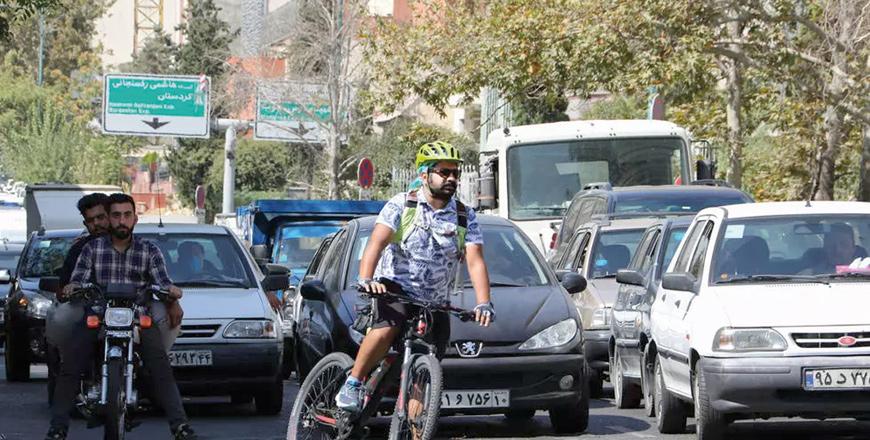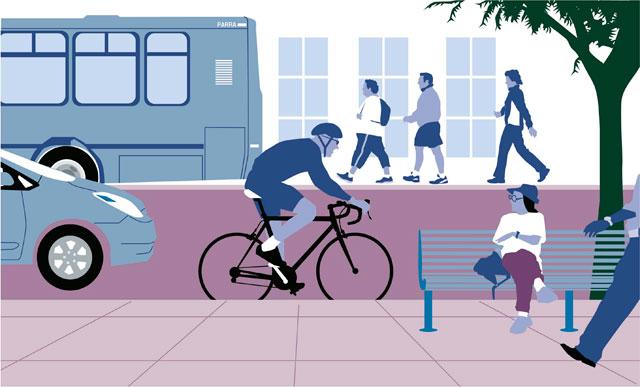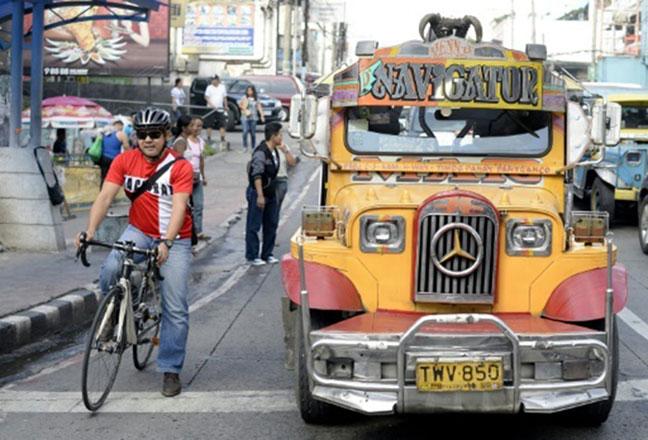You are here
Uphill battle but Tehran aims to become bike-friendly
By AFP - Dec 02,2020 - Last updated at Dec 02,2020

Farshad Rezayi, a 32-year-old chef, rides over 30 kilometres a day to get to and from work in Iran’s capital Tehran (AFP photo)
TEHRAN — One sunny day, Tehran’s mayor and foreign diplomats rode bicycles through the Iranian capital to promote cycling — no mean feat in a city of steep roads, heavy traffic and toxic fumes.
The metropolis of over eight million at the foot of the Alborz Mountains is choked with vehicles running on subsidised fuel and has limited infrastructure for alternative modes of transport.
But its mayor Pirouz Hanachi believes trying to make a dent in the city’s traffic and pollution problem by promoting a bike-sharing initiative is worth the effort.
Hanachi has tried to promote cycling by launching “Tuesdays without cars” when he and other team members use pedal power to get to and from the office.
“We are not saying this is the solution, but it’s a short-term, accessible, cheap and productive” one to help “ease traffic and pollution a bit”, he said.
“It won’t be like Amsterdam, but it can be a new experience.”
Downtown Tehran is notorious for its traffic jams and regularly covered in vehicle exhaust smog worsened by pollution from factories around the city limits.
That is why the municipality is supporting a bike-sharing start-up called Bdood (“fumeless” in Farsi), the mayor said.
The company’s signature orange bikes can now be seen in 147 stations across Tehran, according to the company’s website.
‘Intruders’
For the mayor, Tehran residents would ideally commute to work by cycling to the nearest metro station then riding the train.
The municipality is “increasing cycling paths and trying to make bicycles more accessible,” he added.
Yet, cyclists say a lack of dedicated infrastructure makes it difficult for the city to be bike-friendly.
“Not at all”, laughed Farshad Rezayi when asked if Tehran was accommodating to cyclists. “Like, no way!”
The 32-year-old chef, who said he is “addicted” to cycling, said he rides over 30 kilometres a day to get to and from work.
He crosses highways and streets with few dedicated bike lanes. Where they do exist, he said, they have mostly been taken over by motorbikes.
It is commonplace in Tehran to see motorcycles speeding down sidewalks or taking up empty space not occupied by cars.
“A lot more infrastructure is needed for regular cycling to be a thing,” Rezayi said, adding that motorists and pedestrians mostly regard cyclists as “intruders”.
“Sometimes drivers harass you, pedestrians get nasty — from snide remarks to physical stuff, dangerous moves that could get you killed.”
‘White Pedal’
Tragedy struck in June when a professional cyclist died in the capital after she was hit by a car.
In her memory, a group of Tehran residents have launched a campaign called “White Pedal” to raise awareness about cycling and promote it by sharing articles online.
Part of the initiative involves the campaign purchasing bikes for impoverished children, said its co-manager Mahboubeh Kohanzad.
Bdood co-founder Gholamhossein Qasemi said he dreams big, imagining an Iran with electric vehicles and “clean transportation”.
In the meantime, the bike-sharing service costs about 10 US cents for 30 minutes — roughly the same as a short shared-taxi ride — and can be accessed via an app.
Sarfaraz, unlocking a Bdood bike at Tehran’s bustling Valiasr Square, said he’d been using the service for over a year-and-a-half and was “very satisfied”.
Cleaning the handles with a sanitising swipe, the 30-year-old marketer said he preferred the orange, gearless bikes to taxis, particularly during the novel coronavirus pandemic — but not for long distances or uphill.
Animator Nastaran Jabarnia, 29, said Bdood’s bikes inspired her to repair her own old one, although she said being a woman cyclist in Tehran posed certain additional challenges.
“Being cat-called, whistled at, or even cars tailing you and passing at high speed” were some of the problems she faced, she told AFP in a phone interview.
“And then there’s the hijab,” she added, referring to the mandatory head covering for women.
Aside from the physical and environmental hurdles, there is another challenge for Iranian women cyclists: Ultra-conservatives consider it to be immoral.
“I go out fully covered but still get stressed,” she said.
Related Articles
SHANGHAI — Unlock them with an app, drop them off anywhere, and nip past lanes of stationary car traffic: the humble bicycle is seeing a rev
MANILA — Cyclist Jack Yabut is on a perilous and likely futile crusade to help the Philippine capital beat “Carmageddon”, but even if his ca
SHANGHAI — Basketballs, electric scooters and rainbow-coloured umbrellas — nothing seems out of bounds in China’s booming “sharing economy”.



















